#Laser Scan to BIM services
Explore tagged Tumblr posts
Text
Future Horizons of Scan to BIM Technology
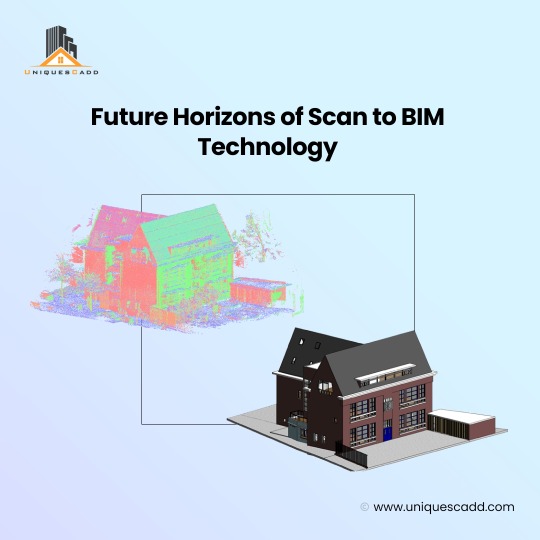
Scan to BIM is important for reconstruction and renovation projects as it eases the complex process and eliminates the manual methods of measurements. However, the rapid growth in tech brightens the future with more accuracy and efficiency in the working approach. Get a better understanding of the future horizon of scan to BIM technology.
#bim services#bim modeling services#scan to bim services#bim services india#point cloud to bim#point cloud to bim services#bim drafting services#bim outsourcing services#outsource bim services#bim architectural services#laser scan to bim#point cloud modeling services#scan to bim modeling services#laser scan to bim services#scan to bim modeling#point cloud scan to bim#scan to bim company
2 notes
·
View notes
Text
What is 3D Laser Scan to BIM Conversion Services?

3D Laser Scan to BIM Conversion services use laser scanning tech to capture precise data of existing buildings. This data is converted into detailed 3D BIM models for design, renovation, or construction. It ensures accuracy, saves time, and helps manage complex projects efficiently!
#3D Laser Scan to BIM Conversion services#3D Laser Scan to BIM services#3D Scan to BIM Conversion services#Laser Scan to BIM services
0 notes
Text
BIM Shop Drawing Services by CAD Outsourcing Consultants in San Antonio, USA

CAD Outsourcing Consultants is a leading provider of BIM Shop Drawing Services in San Antonio, USA, catering to a diverse range of AEC industries and projects. Our expert team specializes in delivering high-quality, accurate, and detailed shop drawings that align with your project requirements and standards. We provide advanced 3D modeling services, including architectural, structural, and MEP systems, to enhance project accuracy and efficiency. Our specialized team delivers detailed shop drawings for facades, ensuring every element is meticulously planned and executed.
Contact us today to learn more about our BIM Shop Drawing Services and how we can assist you in achieving your project goals. Let us be your partner in bringing your architectural and engineering visions to life with precision and efficiency.
For More Details Visit Our Website:
#BIM Shop Drawing Services#BIM Modeling Services#BIM 2D Shop Drawing Services#BIM Engineering Services#3D BIM Modeling Services#Facade Shop Drawing Services#BIM Coordination Services#Laser Scan to BIM Services#San Antonio#San Antonio USA#USA#Texas#Texas USA#BIM#BIM CAD Services#BIM Outsourcing
0 notes
Text
Future Trends in Laser Scan to BIM Services: What to Expect

The incorporation of cutting-edge technologies is transforming established methods in the field of architecture, engineering, and construction (AEC) by providing previously unheard-of capabilities and efficiencies. The integration of Laser scan to BIM Services is one such disruptive trend. This article examines what business professionals should expect in the upcoming years with regard to laser scanning and BIM services.
1.Enhanced Accuracy and Detail
Future developments in laser scanning technology should improve the precision and level of detail recorded in scans. More exact point cloud data will be made possible by higher resolution scanners and enhanced processing methods, enabling even more accurate and detailed BIM models. This degree of accuracy will enable engineers and architects to make defensible choices based on thorough and accurate information.
2. Integration with Artificial Intelligence (AI) and Machine Learning (ML)
AI and ML technologies are increasingly being integrated into BIM workflows. In the future, AI-powered algorithms will automate tasks such as object recognition, classification, and even predictive modeling based on historical data. This integration will streamline the conversion of point cloud data to BIM models, reduce manual intervention, and improve overall efficiency.
3. Real-Time Collaboration and Visualization
Real-time collaboration and visualization features will be prioritized in future developments in Laser Scan to BIM services. Project teams, customers, and stakeholders will be able to collaborate seamlessly thanks to cloud-based technologies that will allow stakeholders to view and interact with BIM models and point cloud data from any location. Decision-making and project communication will be improved by immersive experiences made possible by real-time visualization tools.
4. Augmented Reality (AR) and Virtual Reality (VR) Integration
The application of AR and VR technology to BIM services will be crucial in the future of Laser Scan. Stakeholders will be able to see point cloud data and BIM models in actual settings thanks to these immersive technologies. Through the ability to navigate virtual constructs, identify conflicts, and replicate real-time modifications, architects, engineers, and clients will be able to better comprehend and validate design intent.
5. Environmental and Sustainability Analysis
Environmental and sustainability analysis capabilities will be incorporated into future Laser Scan to BIM services as sustainability becomes a more important factor in construction projects. BIM models will measure energy use, carbon footprint, and environmental effect in addition to representing the physical and functional features of buildings. Green building standards compliance and sustainable design choices will be aided by this all-encompassing strategy.
6. Predictive Analytics for Facility Management
Laser Scan to BIM services will go beyond the stages of design and construction to include facility management and maintenance. Utilizing point cloud scans and historical data from BIM models, predictive analytics systems will be able to forecast maintenance requirements, optimize building performance, and extend asset lifespan. Over the course of the building's existence, this proactive strategy will lower operating costs and improve building efficiency.
7. Security and Data Privacy
Security and data privacy will be given top priority in future Laser Scan to BIM services because of the increasing reliance on digital technologies. Sophisticated encryption methods and safe cloud solutions will protect confidential project data, guaranteeing adherence to legal specifications and defending intellectual property.
Conclusion
Through the use of cutting-edge technologies, Laser Scan to BIM services have the potential to completely transform the AEC sector by improving sustainability, efficiency, accuracy, and teamwork. Organizations such as SmartCADD are at the forefront of this trend, enabling engineers, architects, and construction professionals to embrace innovation and produce outstanding projects that satisfy the requirements of the built environment of the future. As we jointly navigate these fascinating events, stay tuned. Get in touch with us right now to learn more about our Laser Scan to BIM services and to find out how SmartCADD might improve your upcoming project.
0 notes
Text
Silicon EC UK Limited offers comprehensive Laser Scan to BIM Services in the UK, catering to the evolving needs of the construction and architectural industries. Our experienced team of engineers and BIM specialists transforms raw scan data into intelligent 3D models, seamlessly integrating them into the BIM environment. Our team of experienced professionals utilizes state-of-the-art equipment to conduct comprehensive laser scans, generating highly detailed point clouds that serve as the foundation for creating accurate 3D models.
Choose Silicon EC UK Limited for comprehensive Laser Scan to BIM Services in Bristol, UK, and experience the difference in precision, reliability, and innovation for your next Building project.
For More Details Visit our Website:
#Laser scan to BIM Services#Revit Scan to BIM Services#3D Laser Scan to BIM Services#Point Cloud to BIM Service#Scan to BIM Conversion Services#BIM Services Video#Scan to BIM Services Video#CAD Services#Laser Scan to BIM Services Video#Viral Video
0 notes
Text
How To Improve Accuracy With Laser Scanning For BIM?
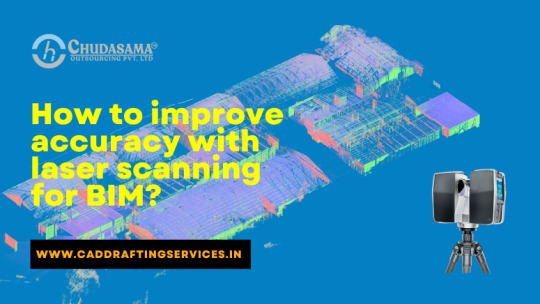
Laser scanning can be an efficient tool for creating accurate Scan to BIM Modeling. There are various factors that may impede its accuracy. The technique of scanning current circumstances and using that information to produce an exact as-built model of such circumstances is known as Point Cloud to BIM Modeling. A usual technique involves taking measurements in the area and merging them with the most recent documentation to make an as-built model. For more information, read our blog, https://caddraftingservices.in/blog/improve-accuracy-with-laser-scanning-for-bim/
#scan to bim modeling services#scan to bim modeling#scan to bim services#point cloud to bim services#laser scan to bim services#point cloud to revit services
0 notes
Text
Discover how Scan-to-BIM modeling transforms the construction process by improving accuracy and efficiency. Learn how this cutting-edge technology converts laser-scanned data into detailed 3D models, enabling better project visualization, clash detection, and seamless collaboration across design and construction teams.
#3D Laser Scanning#3D Scan to BIM#BIM Modeling#BIM Technology#Building Information Modeling#Scan to BIM#scan to bim services
1 note
·
View note
Text
#3d laser scanning#bim modeling services#Stockpile 3D Scanning Survey#3D Modeling#revit modeling services
0 notes
Text
Scan to bim transforming point cloud to Revit Modeling
In the construction and architectural industry, precision is everything. Every detail counts, and the need for accurate representations of existing structures is crucial. This is where Scan to BIM (Building Information Modeling) comes into play, revolutionizing the way professionals approach renovation, retrofitting, and restoration projects. By converting point clouds into detailed Revit models, Scan to BIM offers a reliable and efficient solution for creating accurate digital representations of physical spaces. This article explores the process, benefits, and applications of Scan to BIM, with a focus on the services provided by RVTCAD.

What is Scan to BIM?
Scan to BIM is the process of using 3D laser scanning technology to capture the exact dimensions and features of a building or structure. This technology generates what is known as a "point cloud"—a dense collection of data points that represent the surface of the scanned object. These point clouds can then be converted into detailed 3D models within software like Autodesk Revit, which is widely used in the construction and design industries.
The Process of Converting Point Clouds to Revit Models
Data Collection with 3D Laser Scanning: The first step in the Scan to BIM process is capturing the physical space using 3D laser scanners. These devices send out laser beams that bounce back upon hitting a surface, recording precise measurements. The result is a point cloud that represents millions of points on the scanned surfaces.
Point Cloud Processing: Once the point cloud is generated, the data is processed and cleaned up. This involves removing any irrelevant points, noise, or errors that may have been captured during scanning. The point cloud is then aligned to ensure that all scans are in the correct position and orientation.
Modeling in Revit: The cleaned and processed point cloud is imported into Autodesk Revit, where it serves as a reference for creating a detailed 3D model. This model includes all architectural, structural, and MEP (Mechanical, Electrical, and Plumbing) elements, allowing for a comprehensive digital representation of the building.
Quality Control and Verification: After the Revit model is created, it undergoes rigorous quality checks to ensure accuracy. Any discrepancies between the model and the actual structure are addressed, and the model is fine-tuned to match the real-world conditions as closely as possible.
Benefits of Scan to BIM
Enhanced Accuracy: One of the primary benefits of Scan to BIM is the high level of accuracy it offers. Traditional surveying methods often leave room for error, but 3D laser scanning captures even the smallest details, resulting in models that closely match the physical structure.
Time and Cost Efficiency: By automating the process of capturing and modeling existing conditions, Scan to BIM significantly reduces the time and cost associated with manual measurements and drafting. This efficiency is particularly valuable in large and complex projects.
Improved Collaboration: The detailed Revit models generated through Scan to BIM provide a reliable basis for collaboration among architects, engineers, and contractors. The shared model ensures that all stakeholders are working with the same accurate information, reducing the likelihood of errors and miscommunication.
Facilitates Renovation and Retrofitting: Scan to BIM is especially useful in renovation and retrofitting projects, where accurate as-built information is crucial. The detailed Revit models allow for better planning and execution, ensuring that the new designs integrate seamlessly with the existing structure.
Applications of Scan to BIM
Historic Preservation: Scan to BIM is widely used in the preservation and restoration of historic buildings. The technology allows for the creation of detailed models that can be used to plan renovations while preserving the original features and character of the building.
Infrastructure Projects: In large infrastructure projects such as bridges, tunnels, and highways, Scan to BIM provides an accurate representation of existing conditions, aiding in the planning and design phases.
Facility Management: Facility managers can benefit from the detailed Revit models generated through Scan to BIM. These models serve as a valuable resource for managing maintenance, renovations, and space planning in commercial and industrial buildings.
Building Renovation and Retrofitting: For renovation and retrofitting projects, Scan to BIM provides precise as-built information, allowing for accurate design and integration of new elements with existing structures.
Why Choose RVTCAD for Scan to BIM Services?
RVTCAD is a leading provider of Scan to BIM services, offering expertise in converting point clouds into highly detailed and accurate Revit models. With a focus on quality and precision, RVTCAD ensures that every project is completed to the highest standards, making it a trusted partner in the construction and design industry.
Our expertise in Scan to BIM & 3D Revit modeling services and have years of experience in creating accurate Point cloud to Revit BIM 3D models for as-built purposes as well as for the renovation and refurbishment of any existing building or structure. We provide Scan to BIM services in USA, UK, Germany, Italy, Spain, Australia, Poland, Netherlands, Greece, Belgium, Finland, Switzerland, Malta, Slovenia, and +30 countries.
In conclusion, Scan to BIM is a powerful tool that bridges the gap between the physical and digital worlds. By converting point clouds into Revit models, professionals can work with accurate, reliable data, leading to better project outcomes and more efficient workflows. RVTCAD is at the forefront of this technology, offering services that help you make the most of your Scan to BIM projects.
#scan to bim#point cloud to bim#bim services#3d laser scanning#as-built drawing#bim laser scanning#scan to revit#scan to cad#as-built drawings#point cloud to cad
0 notes
Text
Acute Role of Scan to BIM for Historic Restoration and Preservation

🏛 Historical preservation of monuments is essential as they represent culture, heritage, and architectural marvels. Scan-to-BIM services allow AEC professionals to store historical buildings comprehensively without compromising the essence of the building design or style.🏗 🚧
👉 Check out the detailed role of scan to BIM in preserving historic sites.
#scan to bim services#point cloud to bim#point cloud to bim services#laser scan to bim#point cloud modeling services#scan to bim modeling services#laser scan to bim services#scan to bim modeling#point cloud scan to bim#scan to bim company
1 note
·
View note
Text

Scan to BIM Services in Virginia
In need of trustworthy Scan to BIM services in Virginia? Create precise, comprehensive Building Information Models (BIM) from your 3D laser scans with our knowledgeable staff. We guarantee accurate, effective, and economical solutions for contractors, engineers, and architects. Build, renovate, and manage facilities more easily with smooth BIM integration!
#Scan to BIM Services in Virginia#scan to bim conversion#scan to bim models#3d scan to bim#laser scan to bim modeling#laser scan to bim models
0 notes
Text
Transforming Indian Architectural Renovations with Laser Scanning Technology
In recent years, the field of architectural renovations in India has witnessed a transformative shift with the advent of laser scanning technology. This advanced technology, often referred to as LiDAR (Light Detection and Ranging), offers unprecedented accuracy and efficiency in capturing the intricate details of existing structures, thereby revolutionizing how renovations are planned and executed.
Precision and Accuracy
One of the most significant advantages of laser scanning technology is its ability to capture precise measurements and detailed 3D models of existing structures. Traditional surveying methods, while effective, often fall short of capturing the intricate details and nuances of complex architectural designs. Laser scanning, however, uses millions of laser points to create highly accurate and detailed representations of buildings. This precision ensures that renovation plans are based on exact measurements, reducing the risk of errors and discrepancies during the construction phase.
Time and Cost Efficiency
Laser scanning technology significantly reduces the time required for site surveys. Traditional methods can be time-consuming and labor-intensive, often requiring multiple visits to the site. In contrast, laser scanning can capture comprehensive data in a single visit, speeding up the surveying process. This efficiency translates to cost savings, as fewer resources are needed for data collection and fewer revisions are required due to inaccuracies in initial measurements.
Improved Planning and Visualization
The detailed 3D models generated by laser scanning technology enhance the planning and visualization of renovation projects. Architects and designers can explore the existing structure in a virtual environment, allowing them to identify potential challenges and opportunities before the construction begins. This level of visualization aids in better decision-making and facilitates communication with clients and stakeholders, who can easily understand and visualize the proposed changes.
Related blog: How Laser Scanning Solution Can Help In Renovation Projects Of Indian Architecture Buildings?
Enhanced Documentation and record-keeping
Laser scanning provides a comprehensive and permanent record of the existing conditions of a structure. This digital documentation is invaluable for future reference, maintenance, and further renovations. Having an accurate digital archive ensures that any modifications or repairs are based on reliable data, reducing the risk of unforeseen issues and preserving the architectural integrity of the building.
Sustainability and Preservation
In the context of heritage buildings and historical sites, laser scanning technology plays a crucial role in preservation. Many of India’s architectural treasures require careful and precise restoration to maintain their historical significance. Laser scanning allows for non-invasive documentation of these structures, capturing their current state without causing any damage. This technology ensures that renovations and restorations are carried out with utmost respect for the original design and materials, preserving the cultural heritage for future generations.
Conclusion
Laser scanning technology is revolutionizing architectural renovations in India by providing precise measurements, enhancing planning and visualization, improving efficiency, and aiding in preserving historical structures. As the adoption of this technology continues to grow, it promises to transform the landscape of architectural renovations, ensuring that India’s built heritage is preserved and enhanced for generations to come.
0 notes
Text
Get the Best Laser Scan to BIM Services in Bristol, UK
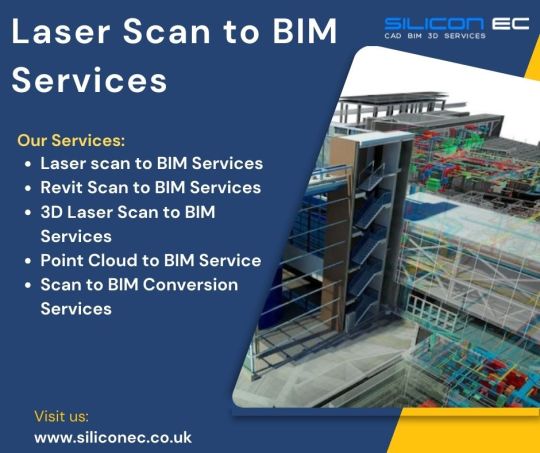
Silicon EC UK Limited offers comprehensive Laser Scan to BIM Services in Bristol, UK, catering to the evolving needs of the construction and architectural industries. Our experienced team of engineers and BIM specialists transforms raw scan data into intelligent 3D models, seamlessly integrating them into the BIM environment. Our team of experienced professionals utilizes state-of-the-art equipment to conduct comprehensive laser scans, generating highly detailed point clouds that serve as the foundation for creating accurate 3D models. Our services empower clients to streamline project planning, enhance construction coordination, and minimize errors, ultimately leading to improved project outcomes and cost savings. Our commitment to excellence, combined with a collaborative approach, ensures seamless communication and transparency at every stage of the BIM project.
Supports and software facility:
Our dedicated workforce comprises steadfast QC heads, proficient Team Leads, and experienced Engineers who possess extensive expertise. Our BIM Services adeptly utilize cutting-edge software, including AutoCAD, Tekla Structure, and Revit Structure, showcasing a commitment to staying at the forefront of technological advancements.
We are a BIM Engineering Company that presents BIM Engineering Services Bristol and other cities covering London, Liverpool, Manchester, York, Leeds-Bradford, Glasgow, Newcastle, Sheffield, and Sunderland.
Choose Silicon EC UK Limited for comprehensive Laser Scan to BIM Services in Bristol, UK, and experience the difference in precision, reliability, and innovation for your next Building project.
For More Details Visit our Website:
#Laser Scan to BIM Services#Revit Scan to BIM Services#3D Laser Scan to BIM Services#Point Cloud to BIM Service#Scan to BIM Conversion Services#Scan to BIM Services#BIM Services#Building Information Modeling Services#Building Information Modeling#BIM#BIM Services Bristol#BIM Engineering Services UK#BIM Services UK#Laser Scan to BIM Services Bristol#Scan to BIM Services UK#CAD Design#CAD Drafting#CAD Drawing#Engineering Services#Engineering Company#Engineering Firm
0 notes
Text
Numérisation des bâtiments historiques par Swiss Scan
Swiss Scan est spécialisé dans la Numérisation De Bâtiments Historiques, en utilisant une technologie de pointe pour créer des modèles 3D précis et des visites virtuelles. En capturant chaque détail de ces merveilles architecturales, Swiss Scan préserve leur beauté pour que les générations futures puissent l'apprécier. Des anciennes cathédrales aux châteaux médiévaux, leur équipe scanne et documente méticuleusement ces structures historiques, garantissant que leur héritage est immortalisé numériquement. Grâce à l'expertise de Swiss Scan, la numérisation des bâtiments historiques n'a jamais été aussi précise et complète.
#Google Street View#Laser scanner#Visite virtuelle#3D laser scanner#Nuage de points 3D#Numérisation des bâtiments historiques#Planifier 3D#Balayage#Scanner 3D#Numérisation 3D#Scanner 3D Suisse#Services de scan 3D pour l'architecture#3D Numérisation#Modélisation 3D#Numériser vers BIM#Modélisation de bâtiment
0 notes
Text
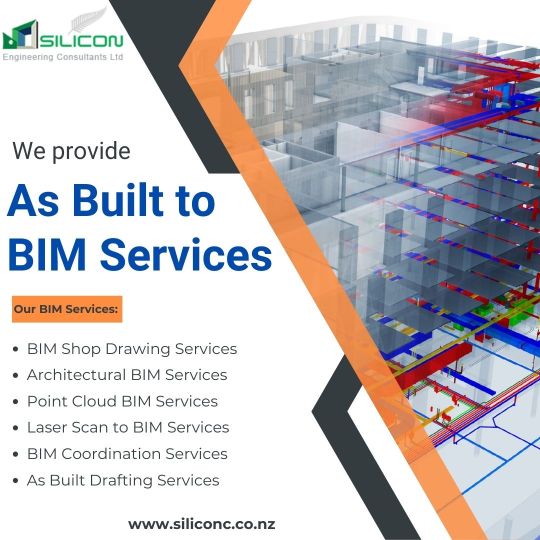
Accurately and quickly advance your project using Silicon Engineering Consultants NZ's As Built to BIM Services in wellington. You may rely on our experience to provide customised solutions that satisfy the unique needs of your project. Our cutting-edge BIM solutions, which are embodied with expertise, guarantee project success. When it comes to providing these services, Silicon Engineering Consultant NZ is exceptional at improving precision and facilitating informed planning. Our method streamlines the design process by maximising resource utilisation, reducing errors, and improving stakeholder communication. In the end, As Built to BIM Modelling promotes accuracy, teamwork, and better architectural and design results.
#- BIM Shop Drawing Services#- Architectural BIM Services#- Point Cloud BIM Services#- Laser Scan to BIM Services#- BIM Coordination Services#- As Built Drafting Services
1 note
·
View note
Text
How Scan to BIM Modeling Makes Renovation and Restoration Easier
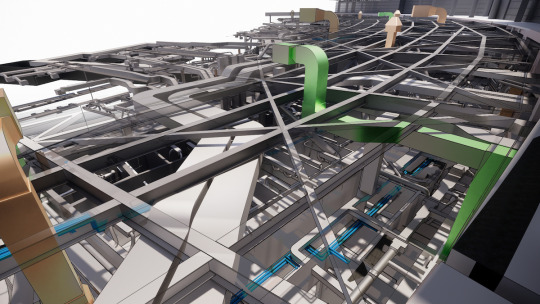
Renovating or restoring a building can be difficult, especially when dealing with older or complex structures. But thanks to Scan to BIM modeling, it’s now much simpler and easier. Using tools like 3D laser scanning and Building Information Modeling (BIM), this method creates highly accurate digital models of buildings, making the whole process faster, cost efficient, and more precise.
Let’s explore how Scan to BIM services can make your renovation or restoration project easier and how different it might work to use them for homes versus commercial buildings.
What is Scan to BIM?
Scan to BIM uses 3D laser scanning to capture the details of a building, which are then converted to a detailed digital model known as a Building Information Model (BIM). This model serves as a reference value throughout the design, planning, and construction phases.
Whether it is a home renovation or a large commercial project, Scan to BIM delivers a level of accuracy and efficiency that traditional methods simply could not match.
Why Use Scan to BIM for Renovation and Restoration?
When working on renovations or restorations projects, you need a clear picture of the building’s current state - its strengths, defects, and potential challenges. Scan to BIM offers several main advantages:
1. Accurate Measurements
Manual measurements are often slow and prone to errors. With 3D laser scanning, you get precise measurements of every detail in the building. This means your digital model perfectly reflects the actual structure, reducing mistakes and saving costs.
2. Faster Turnaround
Surveying a building manually takes a lot of time and effort. Scan to BIM speeds things up by capturing all the data you need in just a few hours, so you can move quickly from the survey stage to planning.
3. Saves Money
By identifying potential issues early, Scan to BIM helps avoid unexpected costs during construction. It also helps you plan resources better, so you are less likely to waste time or materials.
4. Preserves Historical Details
For older or historic buildings, preserving fine details is vital. Scan to BIM captures even the smallest features, such as the intricate designs or textures, ensuring they can be restored accurately without damaging the building’s character.
5. Easier Collaboration
The digital models created by Scan to BIM serve as a single, reliable source of information for everyone, including architects, engineers, and contractors. This helps the entire team stay on the same page, leading to smoother workflows.
How Does Scan to BIM Work?
Here’s how it typically goes:
3D Scanning: A team uses special 3D laser scanners to measure every inch of the building. The scanner generates a "point cloud," which is a detailed and accurate 3D model of the structure.
Processing the Data: The raw data from the scanner is cleaned up and organized using software, making it ready for the next step.
Preparation of BIM Model: The processed data is used to create a digital model. This model includes architectural, structural, and mechanical details, all utilized to the project’s needs.
Using the Model: The finished BIM model is then used for planning, problem-solving, and designing, making the whole process more efficient.
Residential vs. Commercial Projects: How Does Scan to BIM Help?
Scan to BIM works excellent for almost any kind of project, but its applications and benefits vary depending on whether the building is residential or commercial. Here’s a breakdown:
Residential Projects
Uses:
Renovating houses, apartments, or villas.
Adding extensions or making energy-saving upgrades.
Restoring historic homes with preserved details.
Benefits:
Better Space Planning: The models help owners and builders to optimize layouts or plan additions that fit seamlessly with the existing structure.
Energy Efficiency: Scan to BIM makes it easy to spot areas for insulation, system upgrades, or other energy-saving improvements.
Cost Control: It helps owners avoid unnecessary spending by providing a clear plan from the start.
Commercial Projects
Uses:
Renovating office buildings, malls, or factories.
Updating systems to meet modern standards.
Ensuring compliance with building codes and safety regulations.
Benefits:
Streamlined Facility Management: The BIM model becomes a handy reference for ongoing maintenance and operations.
Time Savings: For large buildings, Scan to BIM speeds up the survey process, saving time and effort.
Compliance: The detailed model ensures renovations meet all required codes and standards.
Residential vs. Commercial: Key Differences
Residential Projects:
Scope: Smaller homes or apartments.
Complexity: Simpler, fewer systems to integrate.
Budget: Smaller budgets, cost-efficiency key.
Focus: Aesthetic upgrades and energy savings.
Timeline: Shorter timelines.
Commercial Projects
Scope: Large, multi-story buildings.
Complexity: More complex, involving many systems.
Budget: Higher budgets, focus on ROI.
Focus: Compliance, functionality, efficiency.
Timeline: Longer timelines.
Want to know more about the differences between residential and commercial projects? Check out SmartCADD’s in-depth comparison.
Why Choose Scan to BIM Services?
If you’re renovating or restoring a building, Scan to BIM can make the process easier and more predictable. To get the best results, though, you need the right service provider.
Search for a company that:
Has experience with projects like yours.
Uses the latest 3D laser scanning technology.
Offers complete services from scanning to delivering the BIM model.
For expert Scan to BIM services, check out SmartCADD.
Final Thoughts
Scan to BIM has completely changed how renovations and restorations are done. It saves time, reduces costs, and ensures accuracy, whether you’re working on a cozy family home or a sprawling commercial complex. With a trusted partner like SmartCADD, your project is in good hands. So why wait? Reach out to us and start using Scan to BIM today and make your renovation or restoration a success!
#Scan to BIM#Scan to BIM Services#BIM Modeling#Building Information Modeling#3D Laser Scanning#3D Scan to BIM#BIM Technology
0 notes